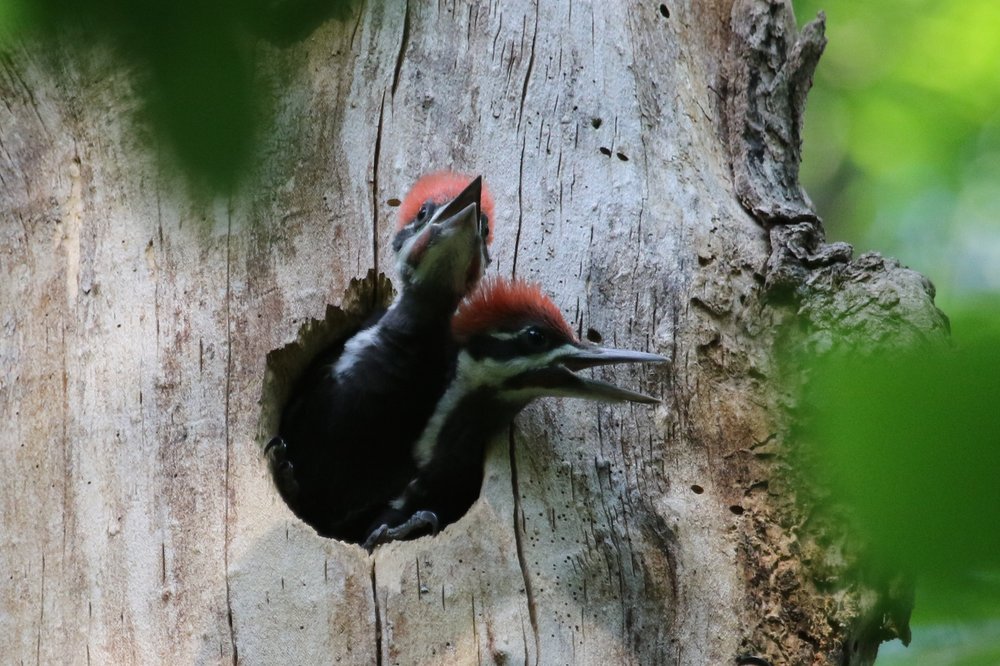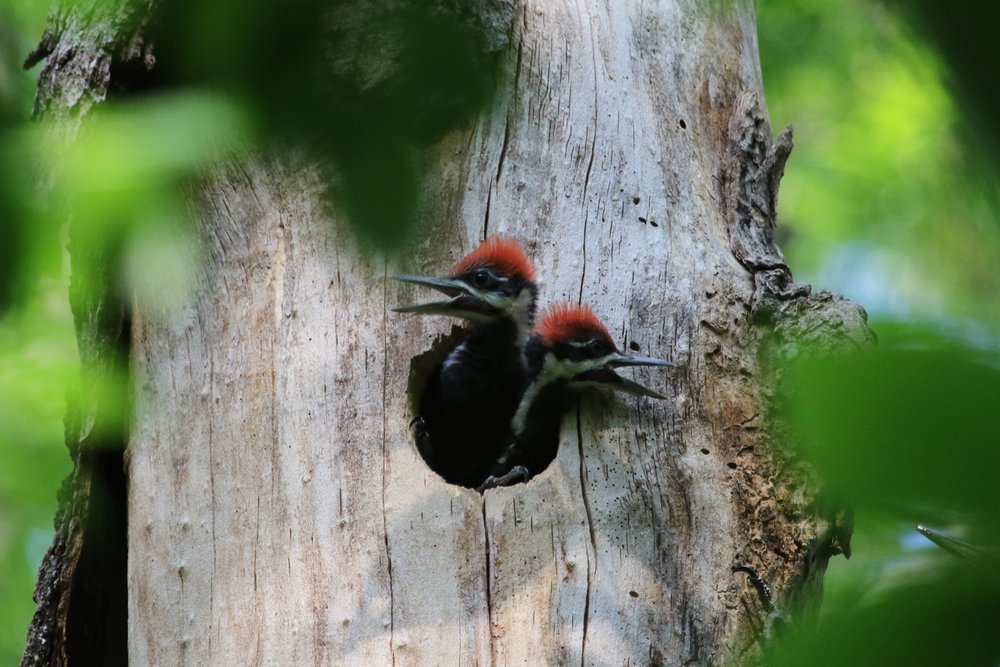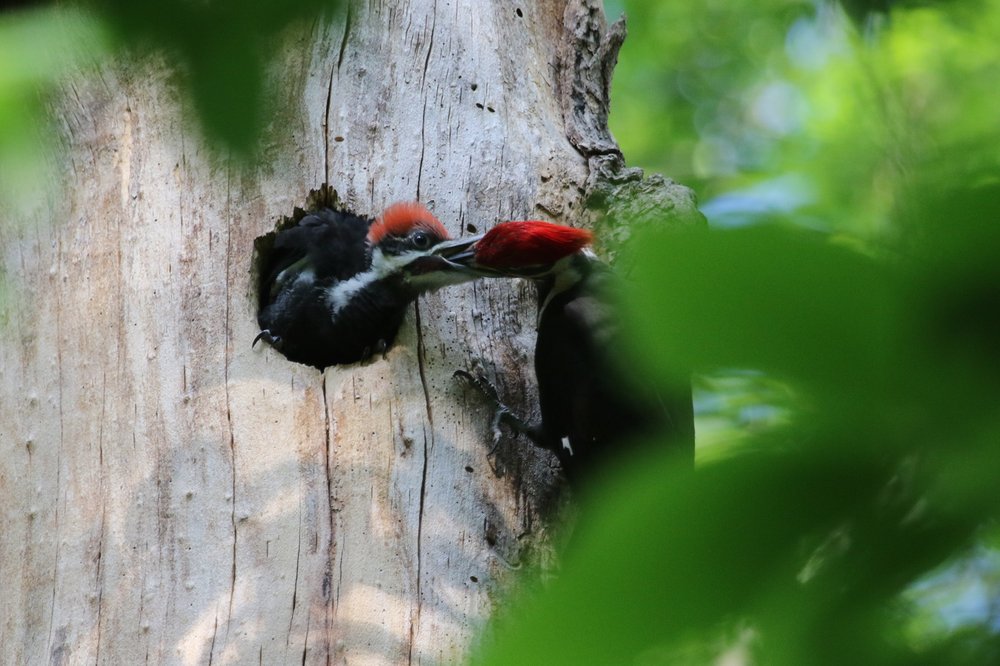
When I got the call of the baby Pileated Woodpeckers I dropped everything to drive over and see them. The Pileated Woodpecker is our largest Woodpecker (except for the Ivory-billed, which I am sure is still out there). It cackles its way through Eastern hardwood forests, and was clearly the model for the cartoon Woody Woodpecker. To see babies would be a dream.
When I arrived at Tatjana's house, perched in the woods and surrounded by newly leafed hardwood forest, she was sitting outside on a blanket, her seventeen-year-old cat, a beautiful dark calico, draped calm across her lap. The cat had had a seizure a few days before and since then had been limp, not eating and only drinking a little. Tatjana had done nothing in the intervening days but hold her cat, speak to her, comfort her. Both appeared peaceful.
“Dying is a long process,” she said kissing the cat’s head.

Tatjana led me a short ways down a trail behind her house.
“Look,” she said, pointing toward a dead tree, one hundred feet into the woods. And there, poking out of an almost perfectly round hole in the smooth, barkless trunk, was the head of a baby Pileated Woodpecker. Everything about the little bird head was a Pileated in miniature: the striking red crest, the dark eye line, the strong chisel-shaped bill. I could see its bill partially open, but I couldn’t hear its baby pleas for food.
I left Tatjana seated on a blanket in an opening, while I slipped into the woods, and stood behind a bush, with a great sneaky view of the baby birds. I watched as one baby extended its tiny head toward the world, retreated and another head emerged. I cheerfully took photographs for perhaps ten minutes, then content—no thrilled—with my Pileated Woodpecker time, returned to Tatjana.

“Oh, no, you’ll have to wait,” she said, nodding back to my cover in the woods. “Wait till the mother comes.” Tatjana is a Buddhist who sits in meditation for hours at a time so I had a sense that I was going to learn a new level of stillness. I returned to my cover with a tiny wooden stool and settled in.
When I go in search of birds, I romp down trails, slog through wetlands, work may way through meadows—I go to the birds. But this spring I’ve tried for stillness, for standing or sitting with patience in hopes the birds will come to me. Now here I was with the perfect opportunity to refine my patience.
For the next hour, I watched as one baby bird head emerged, scanning the woods, looking and listening. Then it would withdraw inside the hole, which appeared but five inches in diameter. For a moment the show would stop, then a head would emerge. The little birds as well had patience, waiting for so long between meals.
I could smell cut wood and incense, could hear crows meddling in a nearby oak tree, and at the bottom of a small hill, a Red-eyed Vireo carried on, entranced with its own voice. I sat propped on that uncomfortable wicker stool not more than a foot high, binoculars and camera at the ready. Waiting, waiting. I didn’t realize that I no longer felt my left leg, until I no longer felt my butt. I stretched with as little motion as possible.

Suddenly both baby birds craned from the nest hole, as if they might tumble out, crests alert. Food! The mother or father arrived, forced its long, thick bill down the throat of the little ones. Feeding was a bit of a violent affair. The parent fed the young, then sped off. I had waited an hour and twenty minutes; the feeding lasted less than a minute.
I returned over the course of the next five days, to bring food to Tatjana as she, with tender patience, sat with her cat, and to check on the Woodpecker babies. It was hard not to think of how life and death were colliding there on that wooded hill. Tatjana looked tired but alert. The cat slept. The baby birds were soon gone, fledged, impatient to get into the world.